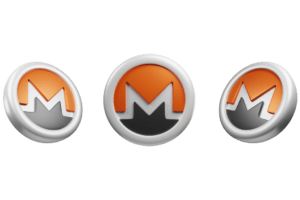Lately, Lido DAO has been making headlines in decentralized finance (DeFi). What’s got people excited is its unique feature that allows investors to stake a variety of cryptocurrencies, such as Ethereum, Solana, Kusama, and Polygon, all without the hassle of minimum deposit requirements or complex infrastructure. Hence, this flexibility is drawing attention to Lido DAO as a promising DeFi platform.
What is DAO?
Lido offers a fresh perspective on staking, focusing on Ethereum. Unlike the conventional staking approach, where your assets can feel locked up and inactive, Lido introduces a more dynamic solution.
How does it Work?
When you stake your ETH on Lido, you receive ‘stETH’ tokens that directly mirror your staked assets, maintaining a 1:1 ratio. This smart mechanism ensures your investments don’t just lie idle; they actively engage in the blockchain ecosystem, growing in value and boosting network security.
Back in 2022, Lido made a name for itself by taking the lead in ETH staking. What set them apart was their ingenious response to the challenge brought on by the shift from PoW to PoS consensus in the world of the leading altcoin. Staking ETH can be daunting for many, especially considering the hefty 32 ETH investment requirement, which is out of reach for most. Lido stepped in with a game-changing solution, making staking accessible to everyone effectively harnessing the entire staking process.
Ostensibly, the platform actively encourages staking participation by offering daily rewards, which help investors maximise their potential returns. Lido’s native token, LDO, is designed to be multichain, offering users greater flexibility and improved access to various networks, and hence get benefits like reduced fees and faster transaction speeds. More, Lido’s DAO takes on a pivotal role in governing the platform, contributing to the development of liquid staking solutions and championing for a community-driven approach to project advancement.
DAO empowers users to influence the platform’s future directly and serves as a mechanism for collective decision-making. In essence, Lido’s DAO is key in shaping the platform’s trajectory, making it a key factor in the staking ecosystem.
What’s the Purpose of Lido?
According to Marin Tvrdić, Lido’s main goal is decentralising Ethereum. It achieves this by spreading out staking responsibilities across multiple node operators as evenly and securely as possible. It’s all about avoiding any concentration on a single node operator and ensuring that the burden is widely distributed.
Lido’s innovative approach to liquid staking liberates assets from being tied down, allowing them to thrive within the broader DeFi landscape. With the introduction of stETH and other stTokens, Lido mirrors the staked assets, keeping them agile and enabling users a seamless interaction with numerous DeFi protocols. seamlessly.
Lido isn’t merely a theoretical concept; it has gained the support of major staking providers on platforms like Ethereum, Polygon, and Solana. This widespread recognition highlights Lido’s potential to revolutionize staking practices, positioning it as a cornerstone in shaping the future of the PoS ecosystem.
Opposed to traditional staking’s focus on security, Lido bridges the gap between stability and liquidity. Lido, a dual-token staking project that offers rewards for staking Lido tokens and exploring other decentralised finance (DeFi) opportunities, is positioning itself as an important player in the redefinition of staking. Lido’s approach has the potential to set a new standard, demonstrating that assets can be both secure and adaptable in the ever-evolving world of decentralised finance.
Image Source: Adobe Stock
Disclaimer: This article is provided for informational purposes only. It is not offered or intended to be used as legal, tax, investment, financial, or other advice.









